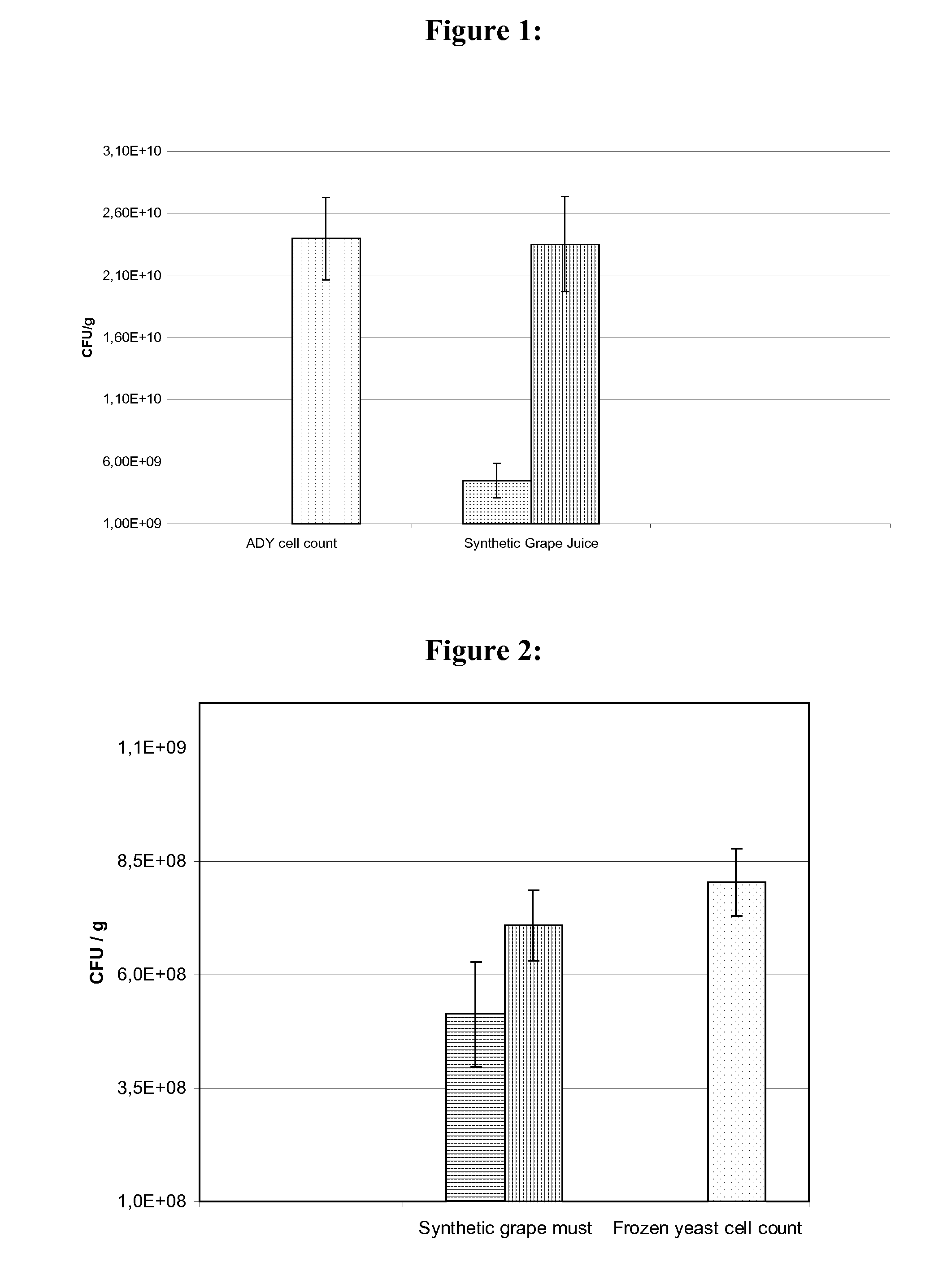Method for inoculating yeast into fruit juice
a technology of inoculation and fruit juice, which is applied in the field of inoculation of yeast into fruit juice or fruit, can solve the problems of significant cell death, complex process of yeast cells, and a large amount of attention and care, and achieves the effect of easy transfer of technology and significant time and manpower savings
- Summary
- Abstract
- Description
- Claims
- Application Information
AI Technical Summary
Benefits of technology
Problems solved by technology
Method used
Image
Examples
example 1
Use of Frozen Yeast—Comparison with Freeze-Dried Yeast
[0043]FIG. 1 shows the results of the detrimental effect of direct inoculation of active dried yeast (ADY) when directly inoculated in synthetic grape juice (horizontal lines) compared to first rehydrating the ADY yeast in water at 37° C. for 20 minutes and then inoculating it in synthetic grape must (vertical lines). After inoculation, cell counts were conducted by pour plating and the data used to calculate an average CFU / g value. The CFU / g of the original active dried yeast was on calculated on average as 2.40E+10 (dotted). Direct inoculation of the active dried yeast resulted in calculated average CFU / g value of 4.49E+9 meaning that 81.3% of the cells died due to direct inoculation. However, when first rehydrated in water at 37° C. for 20 mins and then inoculated in synthetic grape juice, the calculated average CFU / g was 2.35E+10 meaning that only about 2.1% of the cells died after rehydration and inoculation.
[0044]FIG. 2 sho...
PUM
| Property | Measurement | Unit |
|---|---|---|
| time | aaaaa | aaaaa |
| wet weight | aaaaa | aaaaa |
| temperature | aaaaa | aaaaa |
Abstract
Description
Claims
Application Information
 Login to view more
Login to view more - R&D Engineer
- R&D Manager
- IP Professional
- Industry Leading Data Capabilities
- Powerful AI technology
- Patent DNA Extraction
Browse by: Latest US Patents, China's latest patents, Technical Efficacy Thesaurus, Application Domain, Technology Topic.
© 2024 PatSnap. All rights reserved.Legal|Privacy policy|Modern Slavery Act Transparency Statement|Sitemap

